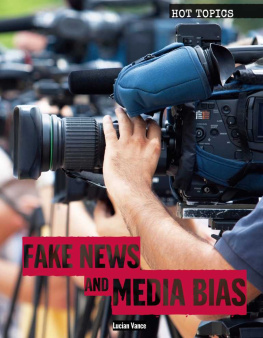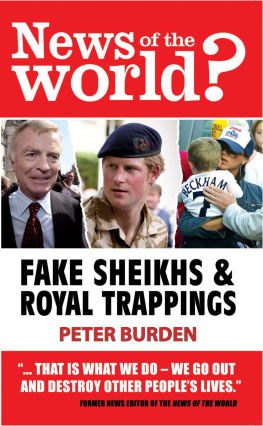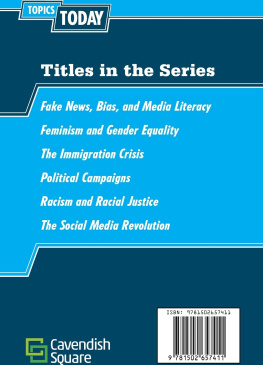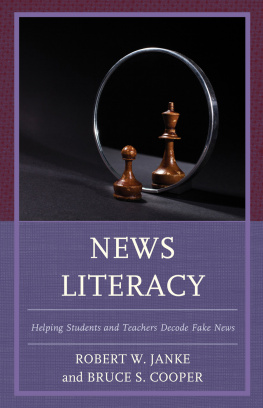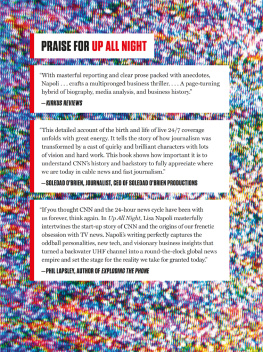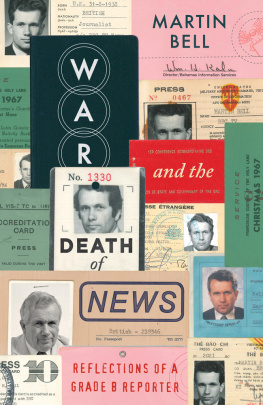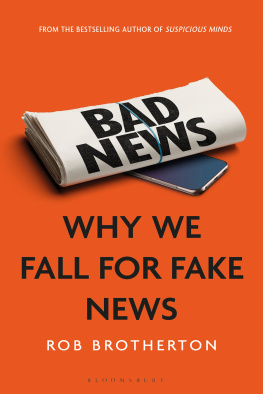FINDING THE NEWS
FROM OUR OWN CORRESPONDENT
John Maxwell Hamilton, Series Editor
FINDING THE NEWS
ADVENTURES OF A YOUNG REPORTER
PETER COPELAND
LOUISIANA STATE UNIVERSITY PRESS BATON ROUGE
Published by Louisiana State University Press
Copyright 2019 by Peter Copeland
All rights reserved
Manufactured in the United States of America
First printing
Designer: Barbara Neely Bourgoyne
Typeface: Sentinel
Printer and binder: Sheridan Books
Library of Congress Cataloging-in-Publication Data
Names: Copeland, Peter, 1957 author.
Title: Finding the news : adventures of a young reporter / Peter Copeland.
Description: Baton Rouge : Louisiana State University Press, [2019] | Series: From our own correspondent | Includes index.
Identifiers: LCCN 2019009871 | ISBN 978-0-8071-7192-9 (cloth : alk. paper) | ISBN 978-0-8071-7250-6 (pdf) | ISBN 978-0-8071-7251-3 (epub)
Subjects: LCSH: Copeland, Peter, 1957 | JournalistsUnited StatesBiography.
Classification: LCC PN4874.C686 A3 2019 | DDC 070.92 [B]dc23
LC record available at https://lccn.loc.gov/2019009871
The paper in this book meets the guidelines for permanence and durability of the Committee on Production Guidelines for Book Longevity of the Council on Library Resources. 
To my mother, and to Maru
CONTENTS
FOREWORD
WANTED: Individuals willing to live out of a suitcase, sleep on the desert sand next to an army tank, look for scorpions in their boots when they wake up, go without a warm bath for days, worry about death threats from Latin American drug cartels, and day-in and day-out act as the faithful eyes and ears of their newspaper readers back home.
George Seldes spoke of foreign correspondents as the nobility of American journalism. And rightly so. Given their distance from editors at home, correspondents have the most freedom of any kind of reporters. They hobnob with foreign leaders. They dine on exotic food. They cover news that can be the most perplexing and often is the most vital. Understanding what people abroad are doing and thinking is essential to anticipating threats to our national security.
Foreign reporting is also the most difficult. Correspondents cover economics and politics, culture and sports, the environment and immigration, epidemics and religion. They combine, in effect, the news beats of dozens of reporters in a domestic newsroom, but on a greater scale. They cover at least an entire country and often a vast region. When a crisis erupts, they hop planes to places they may have never seen before. When they land, they do not enjoy the legal protections that their home country assures them. In war, they can be killed as easily as any soldier.
For all of these reasons, correspondents have written thrilling, memorable books over the ages about their experiences. Peter Copelands is no exception. Readers will feel the frustration that comes with trying to penetrate foreign lands, the challenges of making stories relevant and meaningful for readers, and the exhilaration and raw fear of covering news in dangerous places. Copeland is a deft storyteller.
But this book has attributes not typical of correspondents memoirs. This is what makes reading it unusually satisfying.
First, Copeland exemplifies a quality that is essential to the success of any correspondent, empathy. He has the ability to put himself in the place of the people he covered. While other (but not all) correspondents do this, he vividly shows the challenges and satisfaction of connecting with people and understanding the circumstances in which they live and act.
This approach is much in keeping with the traditions of the E. W. Scripps Company, formerly known as the newspaper group Scripps Howard. The newspapers never sent large numbers of reporters abroad, partly because until 1982 the company owned United Press International (UPI), which had a large overseas presence. Copeland was the only one from the newspapers permanently abroad when he was sent to Mexico City in 1984. A single correspondent in Europe was added later. But the company always covered wars, and its notable specialty has been its focus on people. In World War II, long before the military invented the term embeddedreporting, Ernie Pyle was in the mud with soldiers and Marines, poignantly reporting their experiences and feelings. He was killed by enemy machine-gun fire on the Pacific island of Ie Shima. Scripps Howards Raymond Clapper, one of the best reporters and commentators of his age, also died in the Pacific Theater. Jim Lucas, a former Marine who covered that war and subsequent ones in Korea and Vietnam, won a Pulitzer Prize for his boots-on-the-ground reporting.
Second, Copelands autobiography is an object lesson in fidelity to professional norms. As he points out frequently in these pages, he was concerned with facts, not judging, in assignments that ranged from night police reporting in Chicago to overseas postings and Washington, DC. His job was to record the news, not shape it. While this was once taken for granted, it is less so today. Changes in news media in recent years have opened the door wider to opinion and commentary. Copeland reminds us of the value of accurately and fairly telling what happened.
Finally, and related to the first two points, Copelands memoir is unsurpassed in showing how reporting is done at home and abroad. This nuts-and-bolts aspect of the book is in no way a dry how-to manual. In a lively manner, Copeland explains what goes into good reporting. Of course, the filing of news stories from overseas has changed since Copelands timewhich, by the way, makes his book a valuable reference for historians and others who want to know how things were done at that time. But technologythe essential determinant of the speed with which news can be transmittedis only one part of foreign correspondence. Doing the heavy-lift of reporting to acquire a meaningful story is quite another. Every would-be journalist can profitably read this book for that reason alone.
No students of journalism can fail to learn from and be inspired by this book, even if they want to remain domestic reporters. Peter Copeland celebrates journalisms high calling, essential in a democracy, of serving readerseven when it means having to watch out for scorpions in your boots.
John Maxwell Hamilton
Washington, DC
ACKNOWLEDGMENTS
Writing can feel like a solitary pursuit, but publishing a book requires a lot of help. Im grateful to friends and family, especially my wife, Maru, who kept up my spirits and checked my facts.
Veteran newsman and friend George Hager, who has been backing me up since we covered Central America thirty-five years ago, was a generous and enthusiastic advisor.
Because of constructive feedback from early readers, especially Stephen Baker, I expanded the book from stories about covering the news to include the lessons I learned about journalism. I was trained by many great reporters and editors, and it is in honor of them that I humbly pass along their wisdom to future generations of young journalists.
Other early readers who made important suggestions and fixes include Zita Arocha, Matt Casey, Julie Castiglia, Luis Ferr Sadurn, Bart Gellman, Harry Moskos, Amie Parnes, Ruben Ramirez, Theo Stamos, and my first city editor, Paul Zimbrakos.
Kathleen Dragan edited the first draft with the perfect mix of encouragement and course correction.
At LSU Press, I enjoyed working with editor in chief Rand Dotson, senior editor Neal Novak, and copy editor Gary Von Euer. Journalist and scholar Jack Hamilton guided me through the process and improved the book.
I received needed guidance about book publishing, and how to make my story relevant to todays journalists and readers, from Battinto Batts, Monica Bhide, Mary Kay Blake, Rich Boehne, Bruce Brown, Chris Callahan, Liz Carter, Roy Peter Clark, Isabella Copeland, Lucas Copeland, Trevor Corning, Ken Doctor, Peter Fritzell, Dave Giles, Josh Griffith, Ray Hanania, Sandy Johnson, Paul Mahon, Bruce Sanford, Bob Stewart, Mark Tomasik, Marvin West, and the outstanding students of the Foreign Correspondence course at Ohio University.
Next page

